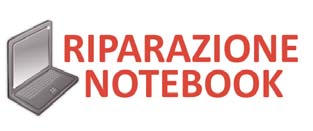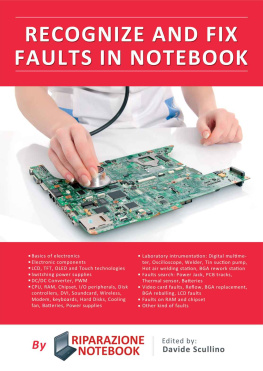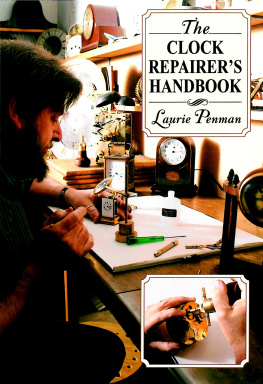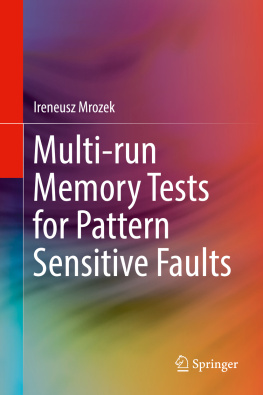Preface
Repairing PCs in general and notebooks in particular, is a job that requires certainequipment and knowledge, at least when repair is meant to go to "put" hands onelectronic boards. In fact, if you replace a hard drive or an optical disc player operation is feasible as long as most of the technical know how to recognize a freeIDE and S- ATA and know the capacity limit of addressable by a BIOS , even goingto replace a TFT LCD panel with a compatible or change a TFT LCD panel withbacklight lamp with a LED backlit, requires that something extra.
The speech takes on more significance when you have to go looking for a fault ina video card, power supply, or the motherboard of the notebook, where the complexity of todays technologies, aimed at containing increasing size while increasing performance, makes the task the technical increasingly difficult, also because of the limited availability of wiring diagrams that describe the electronic circuitry of the computer.
This book was born from reparation lab of www.riparazione-notebook.net andstarts with some knowledge of electronics, which represent the basic preparationfor a technician who is not released from a technical institute to e-mail address orby a faculty of electrical Engineering, must have to understand how to deal withfailures electrical / electronic, act with changes when it is not possible to repair/findan original member, go to the troubleshooting without having detailed schematicdiagrams.
There is a large section that describes the basic structure of a notebook computerand an overview of those failures in laptops that have become characteristic of thelast decade, where the integration thrust and the increase in computing performance and graphics (not followed by an increase of the space and the size of thecooling systems) have brought to market computer beautiful to look at and practical to carry, but of short duration and exposed to frequent problems such as theposting of some pads of the chip more thermally stressed GPU and chipsets,especially the Northbridge.
A special chapter is devoted to the techniques of rewelding and reflow of thesechips, which represent the first approach, and the replacement of SMD and BGAchips, which are the extreme solution when the reflow fails.
No less importance is given to the identification and repair of power supply faults,topic today is not negligible because the motherboard of a notebook, there areseveral stages of DC/DC converter specifically dedicated to supply the chipset, the
ICPU, the RAM, the audio stages and card readers (and more): just go to one ofthe main fault, and the notebook will not turn on anymore, making it difficult tounderstand the origin of the problem.
We also address the failures of input devices such as keyboard and touchpad andreplacement of interface chip, called the Multifunction Keyboard Encoder or SuperI/O, as well as the anomalies in audio sections and units of mass storage.For practical reasons this volume, constantly changing, it can not address all thecircumstances, as each computer has its own structure, which while similar to thatof many others, has particularities in times such as to make it behave in a mannerquite different. But it is, we believe, a guidance and a solid foundation on which tobuild, with the experience, competence and ability to address and resolve faults,from simple to complex.
Have a good reading.
The staff of Riparazione Notebook.netII
Copyright 2012 CoreTech SrlViale Ortles 13, Milano (MI)Email:
staff@riparazione-notebook.netWeb:
www.riparazione-notebook.netwww.ricambi-notebook.net
The information contained in this book have been tested and documented with the greatest possible care. No liability resulting from its use can be attributed to the author andCoreTech Srl or any person or company involved in the creation, production and distribution of this book.
All rights are reserved by law and in accordance with international conventions. No partof this book may be reproduced by means of electronic, mechanical or other means,without the written permission of CoreTech Ltd.
IIIIVSummary
CAPITOLO 1 - BASIC OF ELECTRONICS.........................................................................1
CAPITOLO 2 - PASSIVE ELECTRONIC COMPONENTS.................................................19
CAPITOLO 3 - ACTIVE ELECTRONIC COMPONENTS ..................................................39
CAPITOLO 4 - INTEGRATED CIRCUITS..........................................................................57
CAPITOLO 5 - PC MONITORS......................................................................................69
CAPITOLO 6 - DC/DC POWER SUPPLIES......................................................................87
CAPITOLO 7 - NOTEBOOK STRUCTURE.....................................................................105
CAPITOLO 8 - EQUIP ITSELF TO RAPAIR NOTEBOOKS.............................................145
CAPITOLO 9 - FAULTS ON POWER SUPPLY................................................................181
CAPITOLO 10 - VIDEO FAULTS.....................................................................................195
CAPITOLO 11 - FAULTS IN CPU, RAM, BIOS AND CHIPSET........................................223
CAPITOLO 12 - FAULTS IN MEMORY MASS UNITS.................................................235
CAPITOLO 13 - FAULTS IN COMMUNICATION PORTS................................................243
CAPITOLO 14 - FAULTS ON COOLING SYSTEM..........................................................249
CAPITOLO 15 - FAULTS OF KEYBOARD & TOUCHPAD..............................................255
CAPITOLO 16 - AUDIO FAULTS.....................................................................................261
Vwww.riparazione-notebook.net
CHAPTER 1BASIC OF ELECTRONICS
Before learning what is a notebook and how does it works, you need to have a little know-how about electronics and its fundamental concepts, otherwise we cannot understand how the circuits that make up the computer, let alone assesswhether a certain stage works well or less how and with what to replace a certaincomponent. The purpose of this chapter is to provide the basics, starting from theassumption that there is no electricity at the base of the electronics, which is theset of all the phenomena related to the release or movement of electrons, the latter being infinitely small particles that, along with protons and neutrons, make upatoms, which are the building blocks that make up everything around us. When,for particular physical conditions, one of the electrons is lost, it creates an imbalance of charge and electrical phenomena arise, which can be:
statics, in which case we speak of electrostatic, i.e. presence of electric chargeon a body, due to missing or extra electrons, but which will remain static;
dynamics, the outer electrons of the atom move from one atom to another andtalk, then, of electric current.
For the operation of any electronic apparatus have relevance primarily the latter,however, not be neglected static phenomena, given that, for example, the accumulation of static electricity may be responsible for the damage of some particularlydelicate components of the notebook and generally those MOS technology, forthis should be avoided or contained.
Now, we consider only the electric current, which is a movement of electrons fromone atom to another, or even in a vacuum. Just in terms of how they behave withrespect to the current, the materials can be divided into:
conductors, are crossed through by the current;











